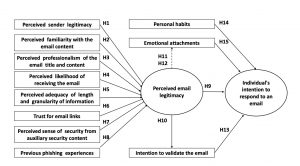Samsung on the future of electronic devices
The summary was originally published in Italian on the website of the Italian innovation supplement Nova by Prof. Luca Chittaro.
Today Chittaro published the second part of his summary, which you find translated below:
“The second part of the talk dealt with a number of specific user experience design issues that Chang considers crucial in our relation with future electronic devices, be they mobile or not:
- Content portability. Users who buy or own digital content (photographs, songs, videos, etc.) have to be able to move these contents between the various electronic devices they own (TV, MP3 player, computer, telephone, home stereo, etc.) At the moment users are – incorrectly – assumed to delve themselves into complex technical issues and to burden themselves with the translation and the transfer of contents between various devices. Even worse is when companies are deliberately trying to limit the portability of contents, by restricting them to a specific platform. The industry should however aim to create integration between products: e.g. when I have a song on a USB key or on an MP3 player, I should be able to listen to it also on my computer, my phone, my home stereo, without having to buy other things, to master technical issues regarding formats and conversions, or to carry out complex actions that make me waist time. This topic is strongly connected with the new concept of migratory interfaces.
- Adaptability of the interface, to allow for a personalisation of the experience. Here he shows the example of Samsung’s uGo interface for mobile phones (developed jointly with Adobe), an adaptive user interface that automatically responds to the user’s environments. The main screen displays a landmark picture that changes based on where you are and what time of day it is, with added graphics and animation alerting you of your mobile phone status (battery charge, missed calls, etc.). For example, the battery charge is displayed by an air balloon in the photo that high up in the sky when the battery is full, but increasingly closer to the ground when the battery starts running out.
- New social paradigms. The impact of phenomena like Myspace, Youtube, Facebook etc. is not limited to the web. Also electronic products have to be rethought within a social dimension. He shows an example of a mobile phone application that Samsung developed in Korea that allows people to listen to music together with others, wherever they may be (the software supports groups of up to 6 people).
- Managing the explosion of choices. Users are suffering under an excess of options, both in terms of devices as in terms of services. This is even exacerbated by a condition of “time starvation” that many live in — which leads to the fact that only 1% of people actually read the manuals of the products they buy, even though companies spend serious resources on producing them. The user experience therefore needs to take into account the fact that people need to be reassured. Some mobile network operators have come to similar conclusions.
Chang, also referring to some of the concepts he discussed during the first part of his talk, concluded his presentation by saying that an electronic product should “lead a person along a journey made out of a series of gratifying stages, thanks to a user experience that captures the imagination and reveals unexpected worlds.”.
An American in the audience, who was clearly pleased with the presentation, commented afterwards: “you are bringing magic into product design”.
This compliment could also be interpreted negatively, in the sense that interaction design sometimes runs the risk of becoming more magic than science. It is clear however that people like Donghoon Chang, who have a liberal arts background, can see certain aspects that technologists cannot (and vice versa). A multi-disciplinary design team that brings together these two points of view into a constructive dialogue is one of those “secrets” in how future innovative products ought to be designed.”





[…] A few weeks ago, I published a summary of a talk given by Donghoon Chang, vice president of Samsung’s Mobile User Experience Design Group, at the recent Mobile HCI conference in Singapore. The summary was originally published in Italian … Read More […]
[…] Part 1. Zen and Interaction Design Part 2. Samsung on the Future of Devices […]
[…] Samsung on the future of electronic devices […]
The whole thing could be interesting. On the other side, some features are more toys… I don’t see how the air balloon could improve the user experience. In my opinion that brings more confusion.